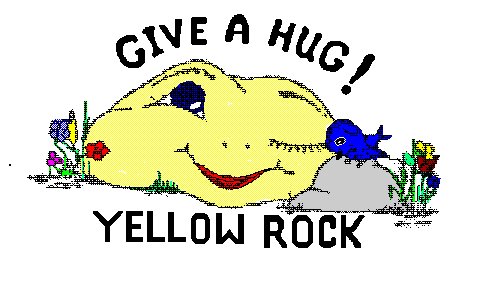


Square Dancing
| Contents |
| Welcome |
| Square Dance Links |



| Contents |
| Welcome |
| Square Dance Links |
Square Dancing is a worldwide activity...that I've seen enjoyed by people as young as 3, to those over 100 years old. The term square dancing refers to the fractional, geometric formations done...and it has nothing to do with lifestyle...on or off the dance floor.
In the world of square dancing, you can't be thinking of anything else while out on the square dance floor, including lusting after a dancer of the opposite sex. Basically, during the dance, one needs to be totally focused on the next set of moves that caller is saying, for the dancers to execute (he or she calls a certain move, and two to three seconds later, the dancers do what they call). There are two types of music that are found at a square dance. The first is known as ''a patter call''...which is a set of square dance moves, depending on the level (Basic, Mainstream, Plus, Advanced, or Challenge)...done to music. It is all done ''impromptu'', ''extemperaneously'', and ''unreheased''...all done off the top of the caller's head...so neither the caller or the dancers ''know what's coming next''. They basically are calling whatever they want (per the dance level), and they know what move or formation leads into the next move, and there's virtually an unlimited number of combinations that they can do, especially the higher the dance level. If one is ''dancing by definition'', one is not necessarily a male or a female... but they are the end, center, point, etc., in the particular square dance call formation. As one caller noted, ''if you don't know the definition, you don't know the call''.
An example of ''a patter call'', at the Plus Level, done by the Tech Squares group, can be viewed here. The other type is ''a singing call''...which is the square dance moves, to the particular dance level, with a certain song...and the singing calls are usually shorter in duration than the patter calls. An example of ''a singing call'', at the Plus Level, done by the Tech Squares group, can be viewed here. You can see that with either one of these, one can't just ''walk in off the street'', and be able to square dance...and it's nothing like what some did in Elementary School!! One has to ''go through lessons'' to learn the moves, definitions, formations, etc. Several years ago, at the Massachusetts Institute Of Technology (MIT), they had square dance courses, part of the ''physical education curriculum''...as one of these was required from students in their collegiate curriculum. A five part series is covered in these YouTube videos, by caller Clark Baker:
2) Modern Western Square Dancing and Challenge
5) Modern And Traditional Square Dance
The reason that it's called ''square dancing'' is because of the many geometric and fractional formations...such as squares, circles, ocean waves, lines, boxes, columns, diamonds, hourglasses, galaxies, triangles, and more...plus fractions of one-quarter, one-half, and three-quarters...it has nothing do with lifestyle. The lowest square dance level is Basic, with the highest level known as Challenge 4 or C-4. Dancers at this level are expected to know around one thousand different calls, with their definitions, formations, and variations, from whether one is dancing as a male or as a female (that's why it's called ''Dance By Definition'' (DBD), or ''All Position Dancing'' (APD). There is also ''round dancing'', which is similar to ballroom dancing, but there are many moves and formations as well...with Round Dance Phases 1-6, with more moves at each level, just as with square dancing. And, there is also line dancing, contra dancing, clogging, and even wheelchair/handicapable dancing.
It must be noted that just because one is dancing the higher levels, it doesn't make them any better than dancers who aren't dancing that level. It means that the dancers at the higher levels have more moves to mess up on (as noted earlier with what the C-4 dancers have to know)!! And, speaking of messing up, you have to be totally sober at a dance...as alcoholic beverages of any kind, before or during a dance, are strictly prohibited. You can not be impaired in any way...and some clubs have the authority to have the violator(s) removed from the premises.
There are many square and round dance festivals each year, including the National Square Dance Convention (R)(NSDC), held the 4 days prior to, and including the last Saturday in June, in a different US city. The first convention was in 1951 in Riverside, California...and while the Spokane, Washington, event was canceled due to Covid-19, the event (known as ''The World's Greatest Square Dance Event'') has met every other year...with dancers, young and old, from the US, Canada, and around the world. Wherever you go in the world, all the calls/moves, etc. are in English...for some dancers, it's the only English they know.
The most popular, and easiest to learn move is called a ''yellowrock''...which is basically a ''friendly hug''.

Return To ASSDF Website Homepage